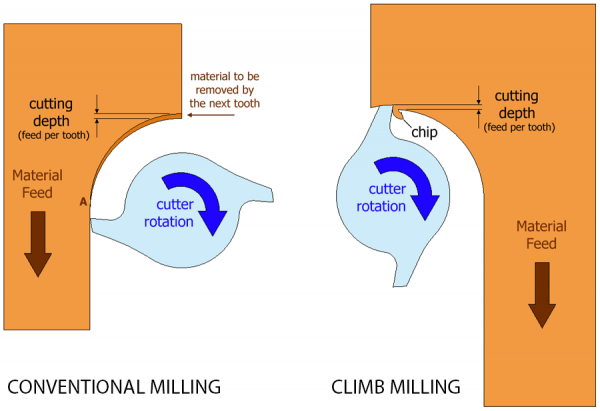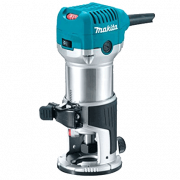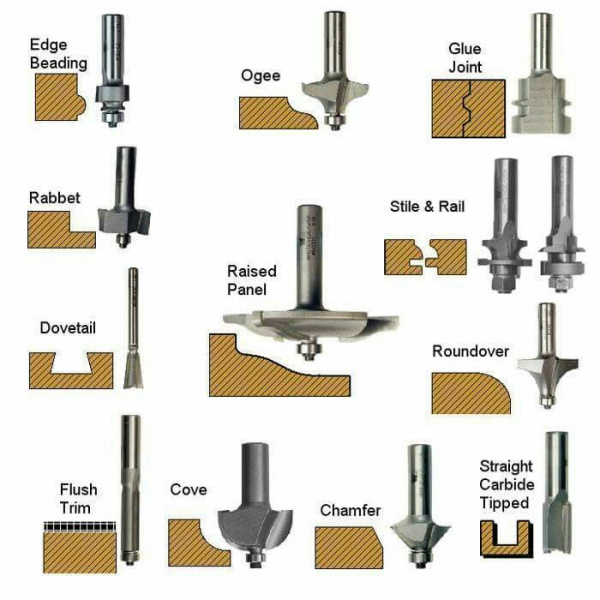Difference between revisions of "Makita RT0700C Router"
| Line 5: | Line 5: | ||
'''Description''': | '''Description''': | ||
| − | High-speed spinning tool with a bit at the end of the motor’s shaft that allows the user to smoothen, to curve, and to polish the edges and | + | High-speed spinning tool with a bit at the end of the motor’s shaft that allows the user to smoothen, to curve, and to polish the edges and surfaces of the wood. |
A hand router is one of the most versatile tools in woodworking. More than just a way to bevel an edge, a router can create all kinds of edge profiles, be used to square wood edges, and even used as a thickness planer to level uneven wood. | A hand router is one of the most versatile tools in woodworking. More than just a way to bevel an edge, a router can create all kinds of edge profiles, be used to square wood edges, and even used as a thickness planer to level uneven wood. | ||
| − | Although the bearing on some router bits helps guide the blade based on a reference, sometimes you may want to make a cut with the router where there is no existing reference. Create a fence to | + | Although the bearing on some router bits helps guide the blade based on a reference, sometimes you may want to make a cut with the router where there is no existing reference. Create a fence to guide you. |
==Safety== | ==Safety== | ||
| − | * | + | *Always wear safety glasses. |
| − | *Hold and support the machine firmly on the surface, | + | *Hold and support the machine firmly on the surface, secure it with clamps if necessary so as not to loose control. |
| − | *The electric cable must | + | *The electric cable must be positioned on the opposite side of the cutting direction. |
==How to use== | ==How to use== | ||
*Install the router bit in the collet. | *Install the router bit in the collet. | ||
| − | * | + | *Remove the base for easy access to the collet when changing the router bit, and for adjusting the fixed base for a tilting one. |
| − | *Adjusting the gauge for the depth of cut you need. Set your bit depth by unbuckling the | + | *Adjusting the gauge for the depth of cut you need. Set your bit depth by unbuckling the clasp and setting the depth of the fixed base. |
*Edge-routing. Clamp the board down and move the wood router in a counterclockwise direction around the board. | *Edge-routing. Clamp the board down and move the wood router in a counterclockwise direction around the board. | ||
| Line 27: | Line 27: | ||
'''Conventional Vs Climbing Cut''' | '''Conventional Vs Climbing Cut''' | ||
| − | A milling cutter can cut in two directions, sometimes known as conventional ( | + | A milling cutter can cut in two directions, sometimes known as conventional (up-cut) and climb (down-cut). For almost all cuts required with a hand router, a conventional cut is recommended, but know that it can cause tear out when reaching the end of a cut. |
[[File:CONVENTIONAL CLIMB.png|600px]] | [[File:CONVENTIONAL CLIMB.png|600px]] | ||
| Line 36: | Line 36: | ||
'''Straight Bits''' | '''Straight Bits''' | ||
| − | Straight bits are most commonly used extensions for a router as they allow you to perform straight cuts. These cuts form grooves or | + | Straight bits are most commonly used extensions for a router as they allow you to perform straight cuts. These cuts form grooves or pockets. They can also be used for creating a shaft for embedding decorative parts in your newly created wooden part. |
'''Rabbeting Bits''' | '''Rabbeting Bits''' | ||
| Line 44: | Line 44: | ||
'''Flush Trim Bits''' | '''Flush Trim Bits''' | ||
| − | Flush trim bits are great for evening the edges of certain materials. For example, if you have two parts that are supposed to act as a support for other parts, it’s advisable that you laminate the edges and make them even. This way | + | Flush trim bits are great for evening the edges of certain materials. For example, if you have two parts that are supposed to act as a support for other parts, it’s advisable that you laminate the edges and make them even. This way you will minimize the friction and ensure that the part lasts longer. |
'''Edge Forming Bits''' | '''Edge Forming Bits''' | ||
Latest revision as of 12:11, 27 April 2020
Description:
High-speed spinning tool with a bit at the end of the motor’s shaft that allows the user to smoothen, to curve, and to polish the edges and surfaces of the wood.
A hand router is one of the most versatile tools in woodworking. More than just a way to bevel an edge, a router can create all kinds of edge profiles, be used to square wood edges, and even used as a thickness planer to level uneven wood.
Although the bearing on some router bits helps guide the blade based on a reference, sometimes you may want to make a cut with the router where there is no existing reference. Create a fence to guide you.
Safety
- Always wear safety glasses.
- Hold and support the machine firmly on the surface, secure it with clamps if necessary so as not to loose control.
- The electric cable must be positioned on the opposite side of the cutting direction.
How to use
- Install the router bit in the collet.
- Remove the base for easy access to the collet when changing the router bit, and for adjusting the fixed base for a tilting one.
- Adjusting the gauge for the depth of cut you need. Set your bit depth by unbuckling the clasp and setting the depth of the fixed base.
- Edge-routing. Clamp the board down and move the wood router in a counterclockwise direction around the board.
Conventional Vs Climbing Cut
A milling cutter can cut in two directions, sometimes known as conventional (up-cut) and climb (down-cut). For almost all cuts required with a hand router, a conventional cut is recommended, but know that it can cause tear out when reaching the end of a cut.

Bits
Straight Bits
Straight bits are most commonly used extensions for a router as they allow you to perform straight cuts. These cuts form grooves or pockets. They can also be used for creating a shaft for embedding decorative parts in your newly created wooden part.
Rabbeting Bits
These router extensions are guided by a pilot bearing and are designed to cut shoulders. They are mostly used to create connecting wooden pieces and parts that don’t require screws or nails to connect to one another.
Flush Trim Bits
Flush trim bits are great for evening the edges of certain materials. For example, if you have two parts that are supposed to act as a support for other parts, it’s advisable that you laminate the edges and make them even. This way you will minimize the friction and ensure that the part lasts longer.
Edge Forming Bits
Edge forming parts are designed to perform small but precise cuts and shafts. They are usually used for decorative cuts and can easily lose their effectiveness over time.
External link
https://www.makita.co.nz/products/model/RT0700C

